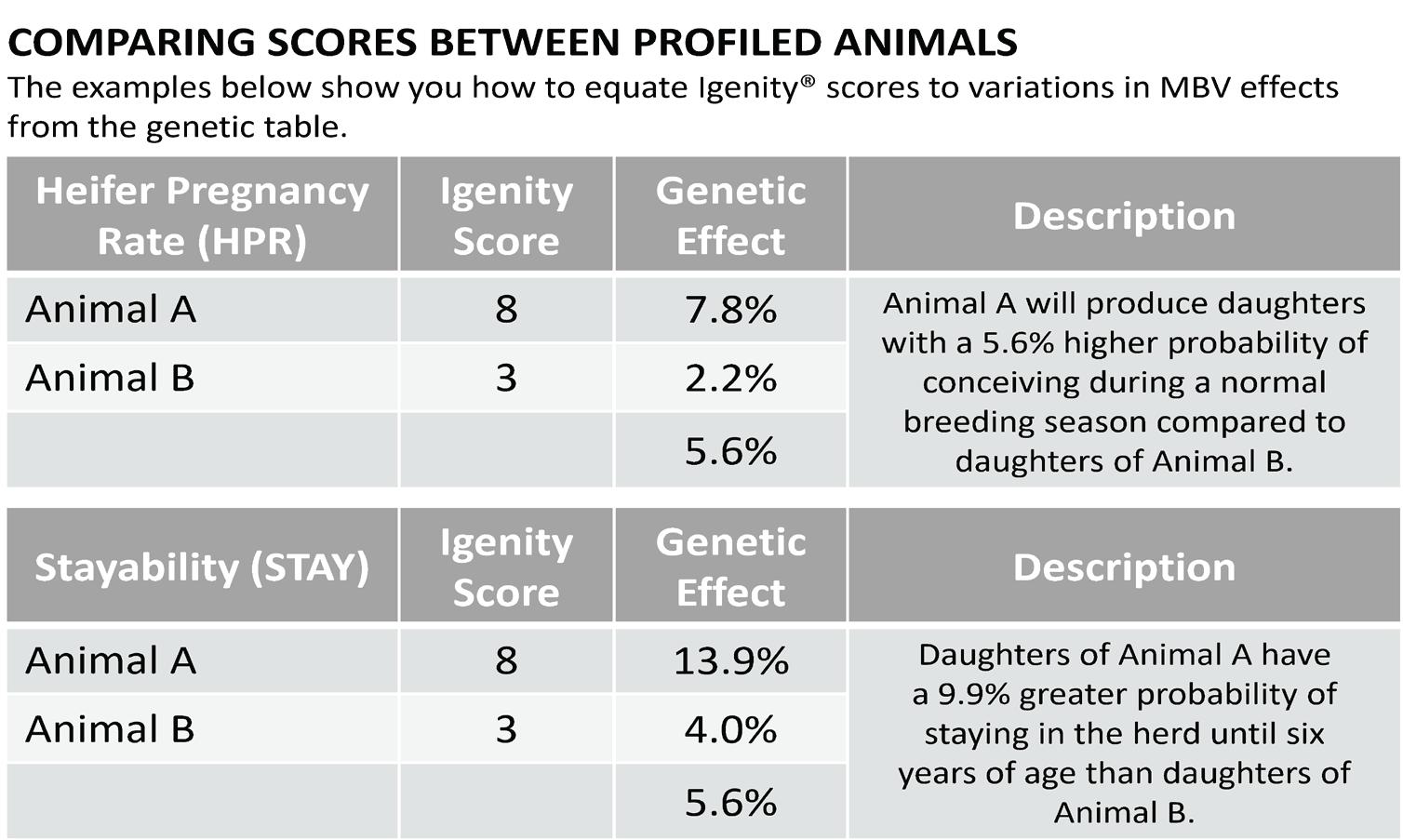
4 minute read
Using Genomic Test Results for Commercial Heifer Selection By UGA Beef Team
Using Genomic Test Results for Commercial Heifer Selection
By The University of Georgia Beef Team
Advertisement
What are the Bene ts of Testing?
1. Improved Confidence
Over the years, commercial cattle producers have had only visual appearance and individual measurements known as phenotypes to use for heifer selection criteria. Now producers can evaluate the genetic differences known as Molecular Breeding Values (MBVs) between heifers well before their first potential breeding season. Having genomic test results for economically important traits while selecting potential replacements allows producers to estimate heifer productivity before going through a breeding season or calving. replacements with poor scores for carcass traits, which will speed up the rate by which those specific traits improve over time. Obtaining the genetic strengths and weaknesses of a herd through genomic testing also allows more targeted matings. If an operation’s genomic results show belowaverage stayability, producers can select bulls with higher stayability EPDs to maximize the speed of improvement. The same could be done for marbling or docility, for example, as well as a combination of traits. Therefore, cattlemen can more quickly meet their herd’s production and marketing goals by removing heifers that are genetically inferior for specific traits of interest.
2. Reduced Development/Replacement Cost
Commercial producers can offset their heifer development cost through improved heifer fertility and longer mature cow productive lifespan when using genomic markers such as Heifer Pregnancy (HPG) and Stayability (STAY), which are lowly heritable traits. By removing heifers that rank poorly for HPG or STAY, overall replacement retention should improve over time.
Heifer Development Cost Estimated @ $600 hd (excludes labor)
3. Faster Improvement
If a producer wants to improve growth or carcass merit traits in a herd, he can eliminate
SAVINGS ON HEIFER DEVELOPMENT: • Cost to test 40 Heifers = $1,160 (40 x $29.00/hd) • Development Cost = 40 heifers x $600 = $24,000 • Development cost savings of heifers culled on genomic data = $6,000 (25% x 40 heifers x $600 = $6,000) What Information is Available?
Neogen’s Igenity® Beef ranks heifers on 16 different traits through a 1-10 scoring system. With the exception of Birth Weight and Residual Feed Intake, higher numbers are generally more advantageous.
How Do I Use the Scores?
Genomic scores are much like EPDs in their use. Producers can focus on the indexes that combine several traits or individual traits that are of greatest concern. Producers can set their own criteria for their operation’s specific needs and goals. Cattlemen wanting to enhance carcass merit in their herd can select against those cattle that are in the bottom 10 percent of the group for marbling or by using a terminal index. Similarly, those with sufficient carcass genetics can focus on selecting heifers that are stronger in maternal traits such as heifer pregnancy or a combination of maternal traits by using a maternal index.
Example of a Heifer Selection Strategy:
A 110-head mature cow operation is seeking to improve overall herd fertility without sacrificing carcass traits. Their recent calf crop resulted in 50 heifer calves. Ten heifers were culled for poor growth, inadequate conformation, poor docility, or skeletal structure issues. The remaining 40 potential replacement heifers were genomic-tested using Igenity® Beef. The producer then ranked the heifers on maternal index and culled the bottom 20 percent. Two other heifers were culled for very low marbling score, resulting in a 25-percent culling rate based on genomic data. The operation developed the remaining 30 heifers for a 60-day breeding season. Then, the producer selected AI sires and purchased clean-up bulls that were in the top 25 percent of the breed for Heifer Pregnancy and Stayability EPDs while also being above breed average for marbling and ribeye area. At pregnancy check, four heifers were open, leaving the operation with 26 replacements that can move the producer toward his production goals faster than just relying on performance records. Below is an example of the cost benefit, just from a heifer development standpoint, of using the genomic test as one of the “tools in the toolbox.” This illustrates the advantage of identifying unproductive females as early as possible. Summary
Using genomic testing along with good nutrition and reproductive management can benefit producers by improving the odds of retaining heifers that will stay in the herd longer. Each female that is culled during the first five years of production is a net loss when factoring annual cow cost with development or purchase cost. In short, genomic scores for commercial heifers can be used to improve confidence in selection decisions, which can reduce development cost with faster genetic improvement in targeted traits.
IMPROVED VALUE: • Sell as feeder heifer: 50 lbs. feeder heifer @ $1.65/lb. = $907.5 VERSUS • Sell as open, yearling heifer: 850 lbs. yearling heifer @ 1.42/lb. = $1,207 • $300 per head revenue - $600 development inputs = (-$300 ) • $300 head loss of keeping heifers that don’t meet your goals or are open











